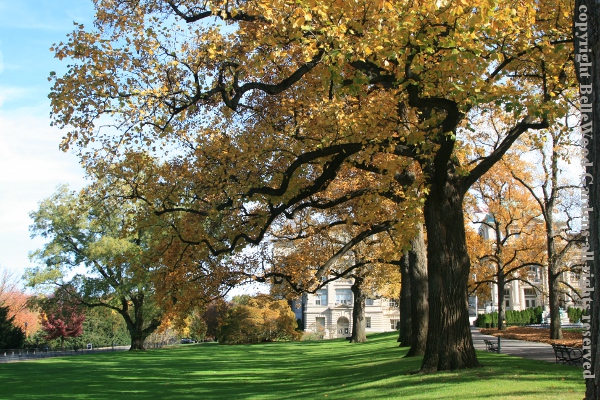
.
If you have any comments, observations, or questions about what you read here, remember you can always Contact Me
All content included on this site such as text, graphics and images is protected by U.S and international copyright law.
The compilation of all content on this site is the exclusive property of the site copyright holder.
Autumn at the New York Botanical Garden
Thursday, 8 November 2018
The rational for my trek to the New York Botanical Garden was to see the kiku, the classically Japanese styles of training chrysanthemums. And it is wonderful. But as long as I am here, what a pity it would be to ignore all the autumn colors of foliage and flowers out on the grounds. Really, if you think about it, there's a window of opportunity in autumn when the trees and shrubs and late blooming perennials offer an abundance of color that's greater than what we think of as spring's preview.

Consider the tulip tree allée leading up to the museum building.
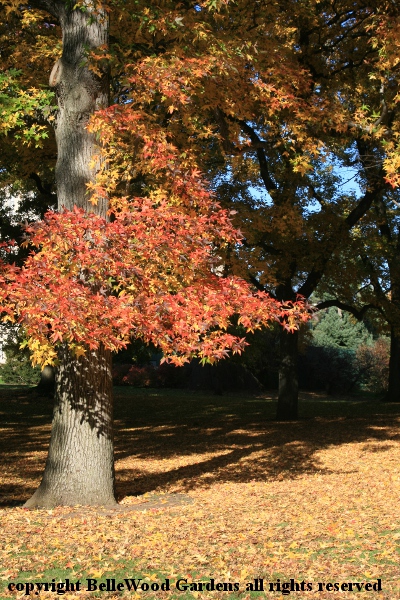
Walking around to the right, towards the education building
attached to it, is this sweet gum, carpeting the lawn with gold.

And a native persimmon, still with some fruit not yet foraged by squirrels.
Perhaps they are waiting for more of a frost to tenderize and sweeten it.

Near the Nolen Greenhouses where the Bourke Sullivan Display House presents the kiku exhibition is the Judy and Michael Steinhardt Maple Collection, with a historic variety of Japanese maples, often reaching peak fall color alongside the chrysanthemum bloom. I admire this Acer palmatum Matsumurae Group 'Crimson Carol', a subtle tapestry of gold to bronze with hints of green.
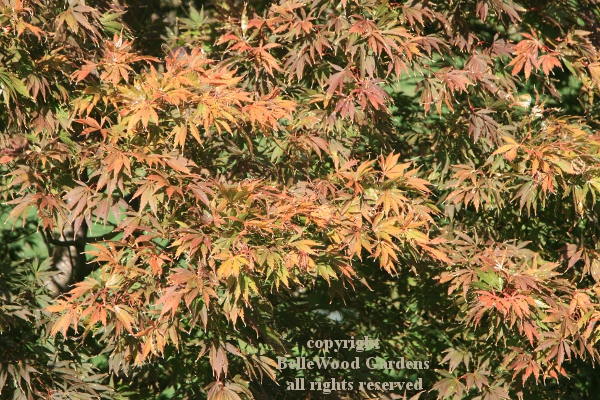
.
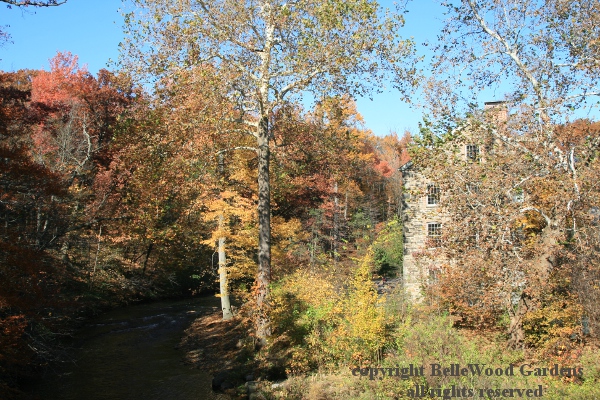
Built next to the Bronx River around about 1840, the Lorillard Snuff Mill (now known as the Lillian and Amy Goldman Stone Mill) is the oldest existing tobacco manufacturing building in the United States. The schist that makes up its walls was quarried locally.
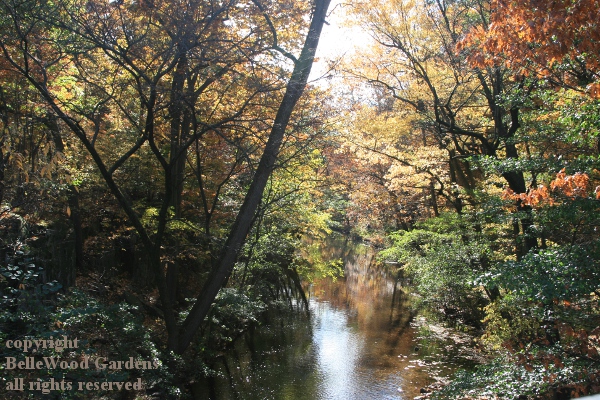
Across the roadway from a tram stop, a view adds reflections on the Bronx River.
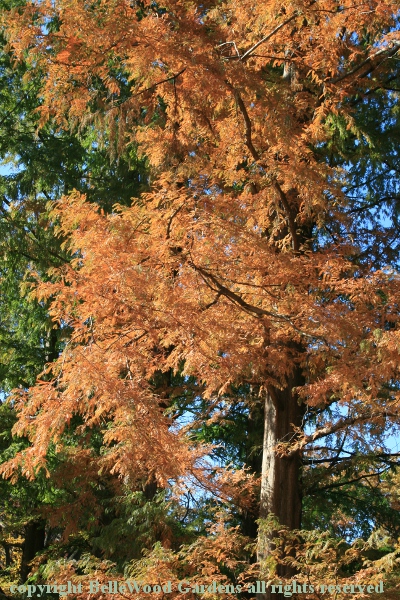
Evergreen. That term refers to plants that have leaves throughout the year, always green. Especially conifers, woody plants with needle-like leaves. Except when they're not. Metasequoia glyptostroboides, dawn redwood, is definitely a conifer. Equally definitely, it's not evergreen.

Even evergreen conifers such as this Pinus strobus, white pine, have
old needles that turn yellow and drop, while overall remaining green.
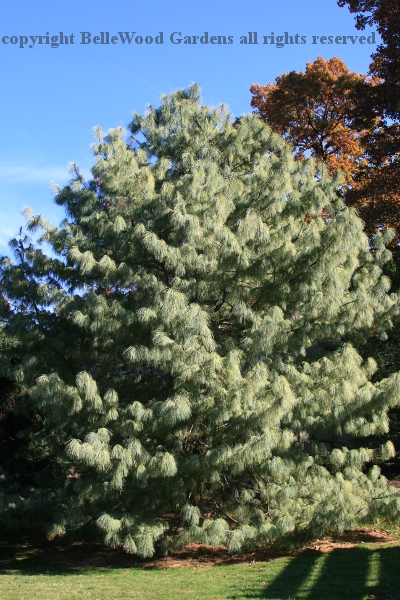
Speaking of conifers, I saw this exquisite Pinus wallichiana 'Zebrina', variegated Himalayan pine, in the Benenson Conifer Collection which is near the Steinhardt Maple Collection.
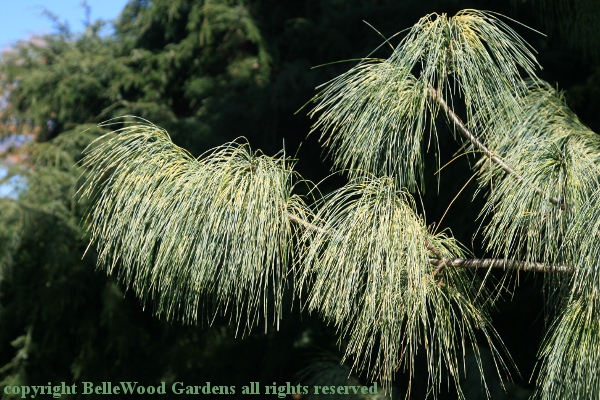
To me, the long drooping needles flecked with yellow look like rain.
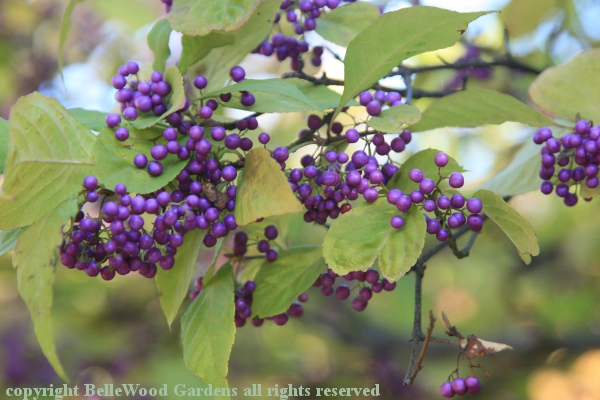
Not all autumn color on woody plants comes from foliage. There are
all sorts of fruits but few as vivid as the violet-purple of Callicarpa,
beauty berry. There are both American and Japanese species.

We think of chrysanthemums as those disposable autumnal blobs of color offered for sale at giveaway prices at supermarkets. At the other extreme, kiku take 11 months of training. Happily, and in between, there are hardy chrysanthemums for gardeners to enjoy.
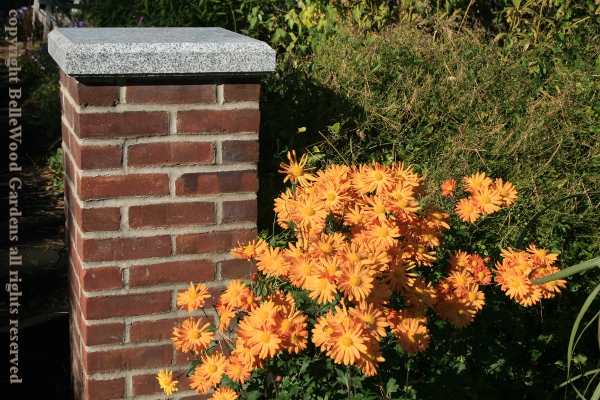
Korean chrysanthemums have daisy-like flowers. This is NYBG Series Orange.
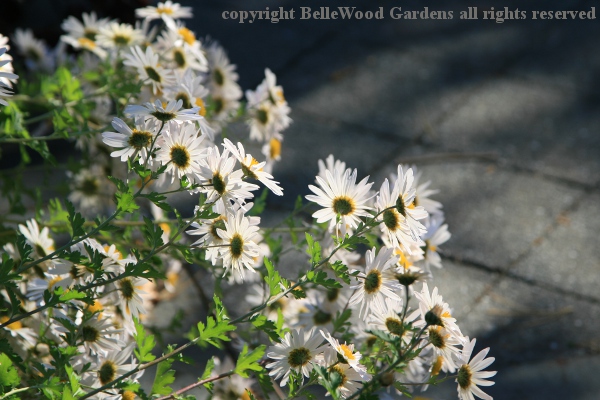
There are other colors too, NYBG Series Blush, and NYBG Series White.
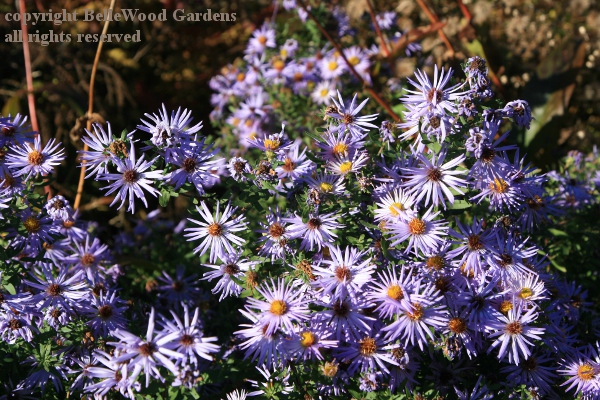
Not all daisies are chrysanthemums. In the 4-Season Border is Symphyotrichum
oblongifolium 'Raydon's favorite', more familiar with its older name of Aster.
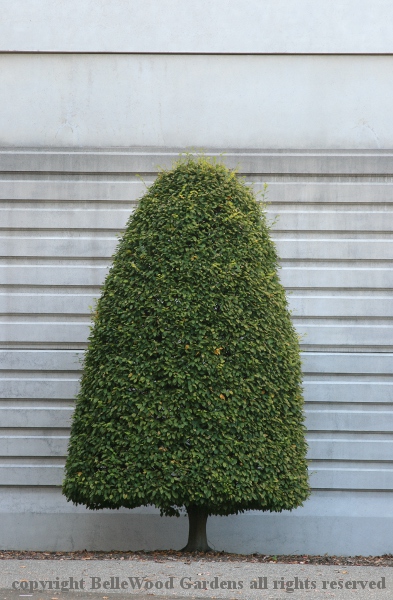
Once again I admire the carefully clipped Ostrya virginiana,
hop hornbeam, or ironwood, stark against the building's wall.
Several stand like guardsmen, sturdy even in winter when bare.
Back to Top
Back to November 2018
Back to the main Diary Page